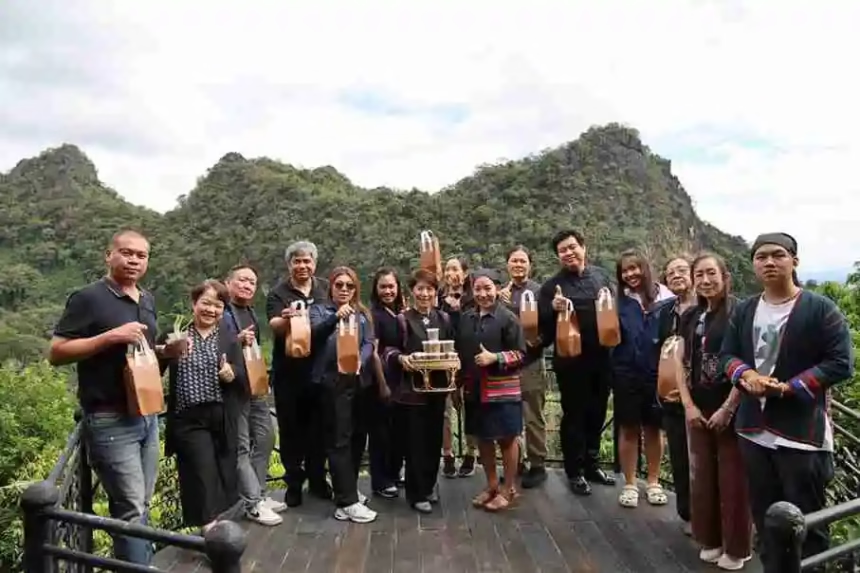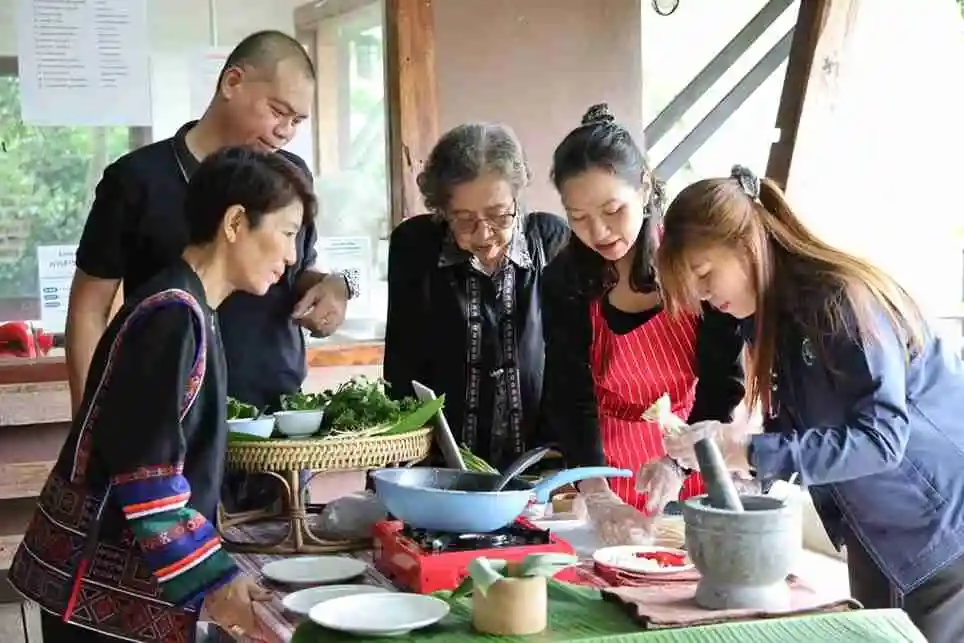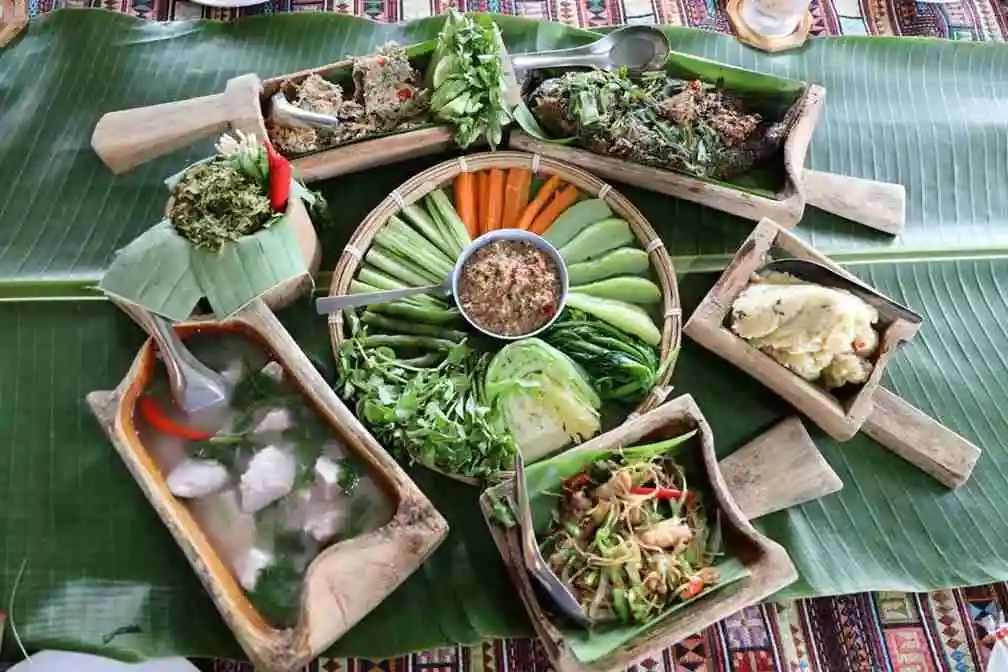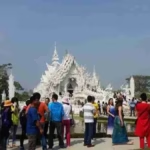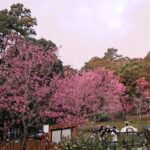CHIANG RAI – When a travel route turns into a classroom, early light and a cool northern breeze roll across coffee farms on the ridge in Mae Sai. The small Akha village of Ban Pha Mee stirs to welcome a different kind of visitor. Not only tourists, but local operators, guides, communicators, tour planners, and network partners.
They came for a route test (FAM Trip) under the Creative Tourism activities of the Designated Areas for Sustainable Tourism Administration, Chiang Rai office (DASTA Chiang Rai). The national challenge is clear: how to turn cultural and local knowledge into high-quality learning experiences that are fair to communities and built to last.
DASTA is a state agency tasked with developing designated areas for sustainable tourism, and the Chiang Rai Special Area is listed on its English-language site.
Why Chiang Rai and Ban Pha Mee
Chiang Rai sits on the frontier and holds two rich sets of assets. Nature, with mountains, rivers, and mist. Culture, with Lanna, Lao Khrang, Tai Yai, Akha, and more. Many styles of learning routes can work here.
Ban Pha Mee, an Akha community that relies on coffee and tourism, is a long-standing example of community-based tourism (CBT) within the DASTA network. It’s official CBT profile outlines learning routes on coffee growing, Akha life, and community identity. This points to system readiness for creative tourism, a model that values exchange and doing, side by side with local hosts.
Inside the Akha kitchen, a hidden menu with a story
The route opened in the Akha kitchen with a signature dish, rak chu chilli paste. This local paste encodes Akha food culture. Rak chu is a hill herb with warm heat and a distinct aroma. It is used to lift the flavour in pastes and some cooked dishes. Thai cultural and health media have documented rak chu as a staple on northern hills, especially among Akha and other highland groups.
FAM Trip guests did more than taste. They cooked. They chose ingredients, pounded chillies, salt, and garlic, then folded in rak chu by feel, following the community cook’s ratios. They tasted, adjusted the seasoning, and learned how to eat it with mountain greens and rice.
The whole process became practical knowledge, matching the core of Creative Tourism defined by Richards and Raymond (2000), where travellers build creative skills through active learning with a destination’s culture, rather than simply watching.
This Akha kitchen is not a cooking show. It is a living lesson, touching on hill plants, seasons, coarse border salt, bamboo utensils, heat control, and sharing at the table. Eating turns into understanding.
From activity to system, policy strengths that last
DASTA’s move to grow creative activities from a CBT base lays a foundation for quality standards for three reasons.
- Quality and safety of the experience
CBT sites that work with DASTA and partners use service standards, safety tools, trained community guides, fair pricing, and visitor management. This reduces unstable experiences for first-time travellers and makes it easier for tour companies to partner with communities. Ban Pha Mee’s CBT profile lays out components of its community tourism product in a clear system. - Fair sharing of benefits
The CBT model spreads income to households and community enterprises, from kitchen work and ingredients to guiding, crafts, and transport. It reduces leakage out of the area and builds skills so locals become teachers and hosts of their own knowledge, not just service staff. - Fit with the province’s strategy
Chiang Rai’s tourism plan prioritizes linked routes and creative products, tied to logistics and the visitor economy of major cities. Provincial public relations data presents the province as a travel hub by road and air, with steady tourism revenue growth, including the 2023 summary. The area can support quality product development on a rolling basis.
Designing the experience, from one dish to a full learning day
To make the Akha Kitchen, Rak Chu Chilli Paste product trade-ready for quality markets, this FAM Trip suggests four design upgrades.
- Pre-class, tell the life cycle of rak chu
Set a mini exhibit on seasons, foraging, processing, and social stories of rak chu. Move from ingredient to knowledge. - Coffee pairing with Ban Pha Mee beans
The village is known for coffee. Pairing rak chu chilli paste with local coffee or tea adds value and depth. CBT system data for Ban Pha Mee can support this route design. See www.dasta.or.th for reference. - Environmental and food waste standards
Manage scraps and greywater, use composters or community waste banks, and show visitors tangible sustainable practices. Quality international markets look for this. - Contemporary storytelling
Produce short 30 to 60-second clips, teach basic Akha words for the kitchen and ingredients, and co-create content with visitors. Promote real learning, not selfie tourism.
Creative tourism is not a trend; it is a new standard
Academic definitions of creative tourism vary, but they share a core idea: learning through participation in local culture. This meets the turn toward meaningful travel, where people want a connection with place and a positive footprint. The Richards and Raymond definition is widely used in Thai and international studies on creative products.
On the policy side, DASTA leads on designated areas for sustainable tourism, lifting standards, linking networks, and focusing on quality marketing. The Chiang Rai Special Area uses FAM Trips as a tool for doing, testing, and improving. This helps community assets like rak chu chilli paste become paid learning courses for quality domestic and international markets.
Expected wins for the economy and society
- Income multiplier in the village
A short class of 2 to 3 hours, capped at 10 to 15 people per round, can circulate income to cooks, growers, guides, artisans, and youth assistants or interpreters. It creates home-based jobs and builds new skills. - Culture and dignity multiplier
When travellers learn for real, Akha stories are told in Akha voices, not by outsiders. This reduces stereotypes and grows cross-cultural understanding. - Province-wide multiplier
Chiang Rai reports total tourism revenue of over 31.7 billion baht in 2023. Quality rural activities help ease pressure on hotspots, balance town and country, and increase length of stay for high-value visitors.
What partners are saying, from home kitchen to a small global stage
This was not a grand press event, but signals from partners were clear. Small and mid-size tour firms can package this with coffee and border routes. Community leaders see a chance to upskill youth. Education partners are ready to shape short courses and basic certificates, covering kitchen hygiene, bilingual communication, and safety for seniors and children, to round out standards.
Six practical steps to get trade-ready by next season
- Three-course tiers
Beginner (pound and taste), intermediate (cook and record a recipe), in-depth (forest walk to learn spices and seasonal rak chu foraging). - Kitchen hygiene standards
Visible checklists for handwashing, sanitizing, and storage, with temperature logs and equipment records. - Short bilingual guide
Thai and English, with basic Akha terms, covering rak chu, the menu, and allergy cautions. - Booking and payment
Centralized under the Chiang Rai CBT network, with daily quotas, arrival time windows, and dress guidelines. - Fair and transparent pricing
Separate teacher fees, ingredients, hosting, and a community fund. - Activity insurance
Cover accidents, food risks, and spice allergies.
From rak chu to a development menu
If rak chu lifts the flavour of food, this FAM Trip by DASTA Chiang Rai lifts the potential of Chiang Rai’s community tourism system. It shows how a small hill village can connect to the province’s big picture and to international standards when design is strong, standards are clear, and benefits are fairly shared.
In the short term, the result is a learning product ready to sell. It appeals to travellers who want meaning over checklists. Over time, activities like this build human capital, skills and pride, and social capital, trust and networks. These are the real roots of sustainable tourism.
The lesson from Ban Pha Mee is not only the warmth of chilli paste. It is a sharper, richer, and more sustainable future for travel in Chiang Rai.




